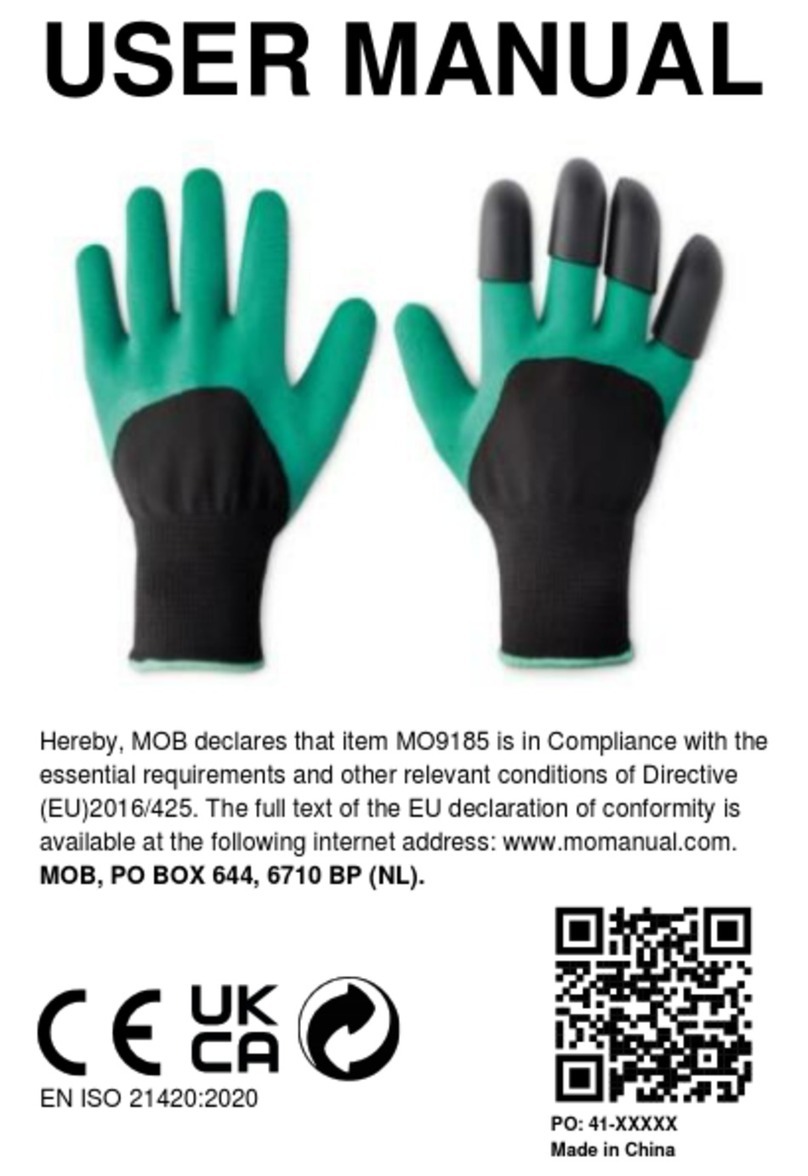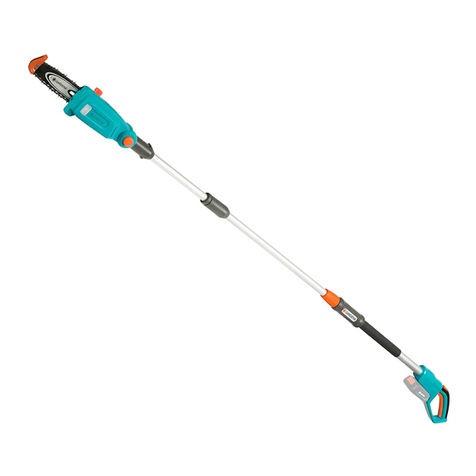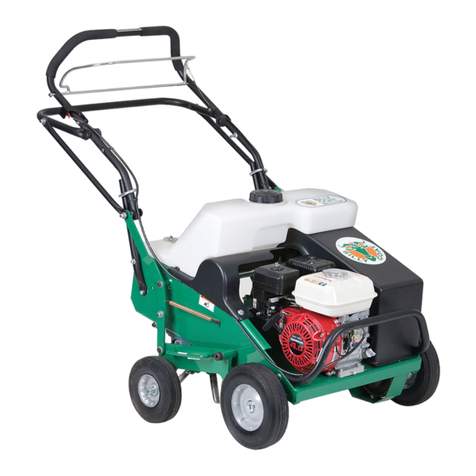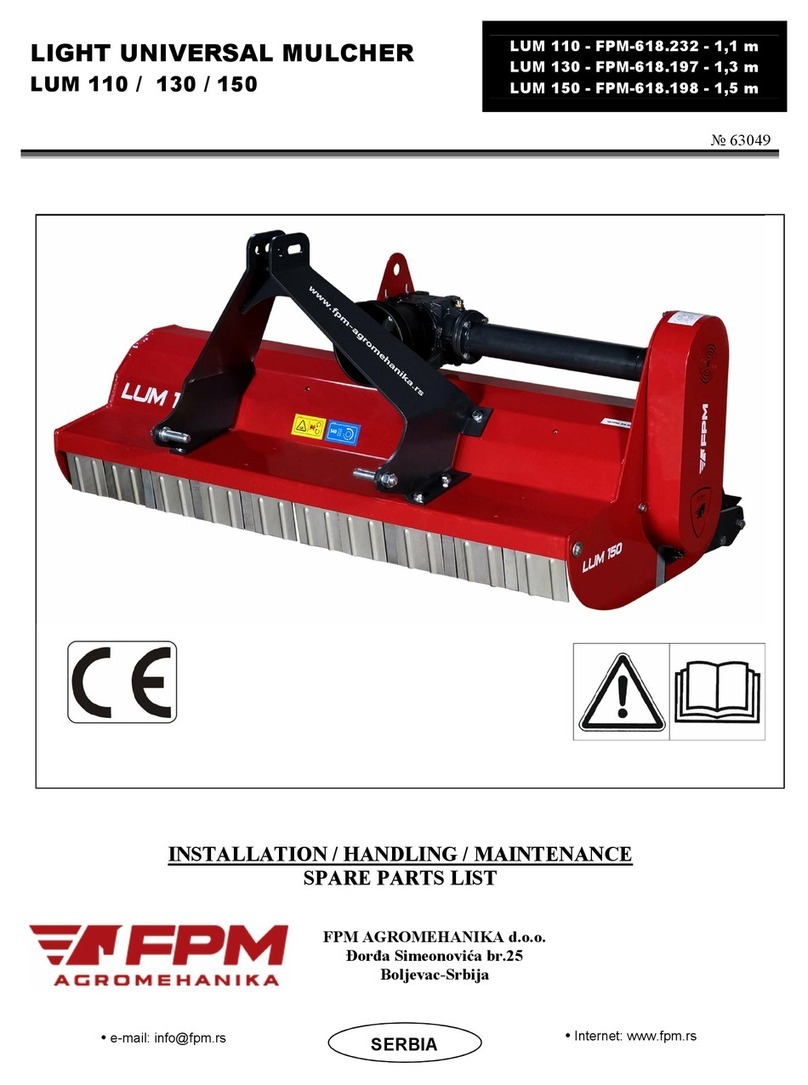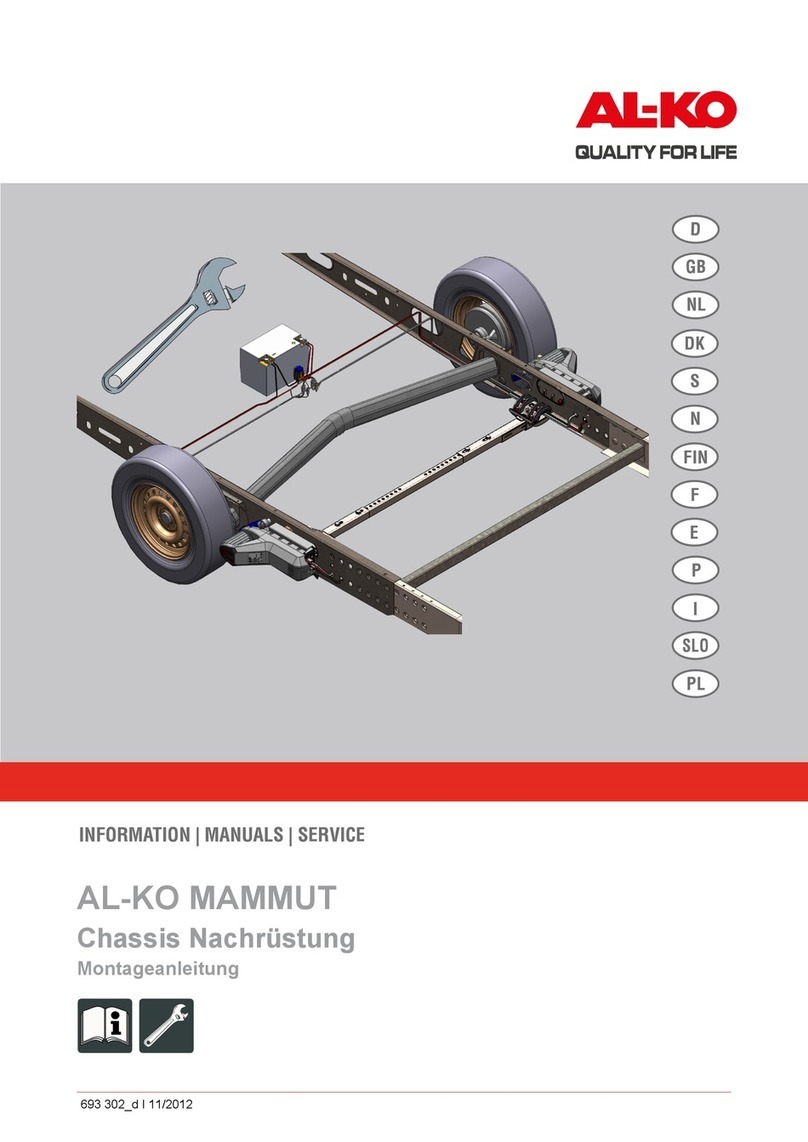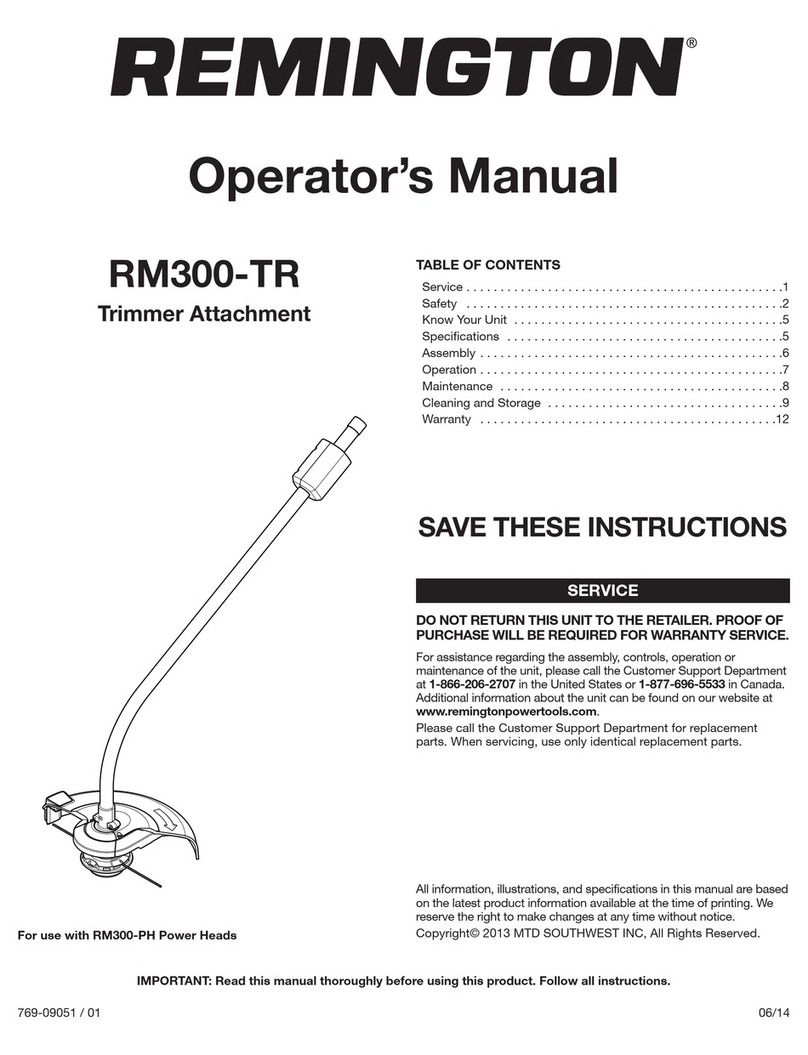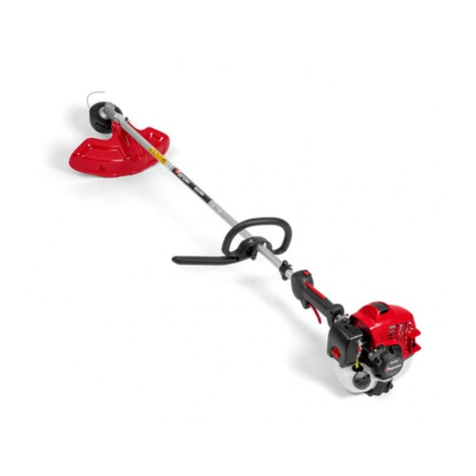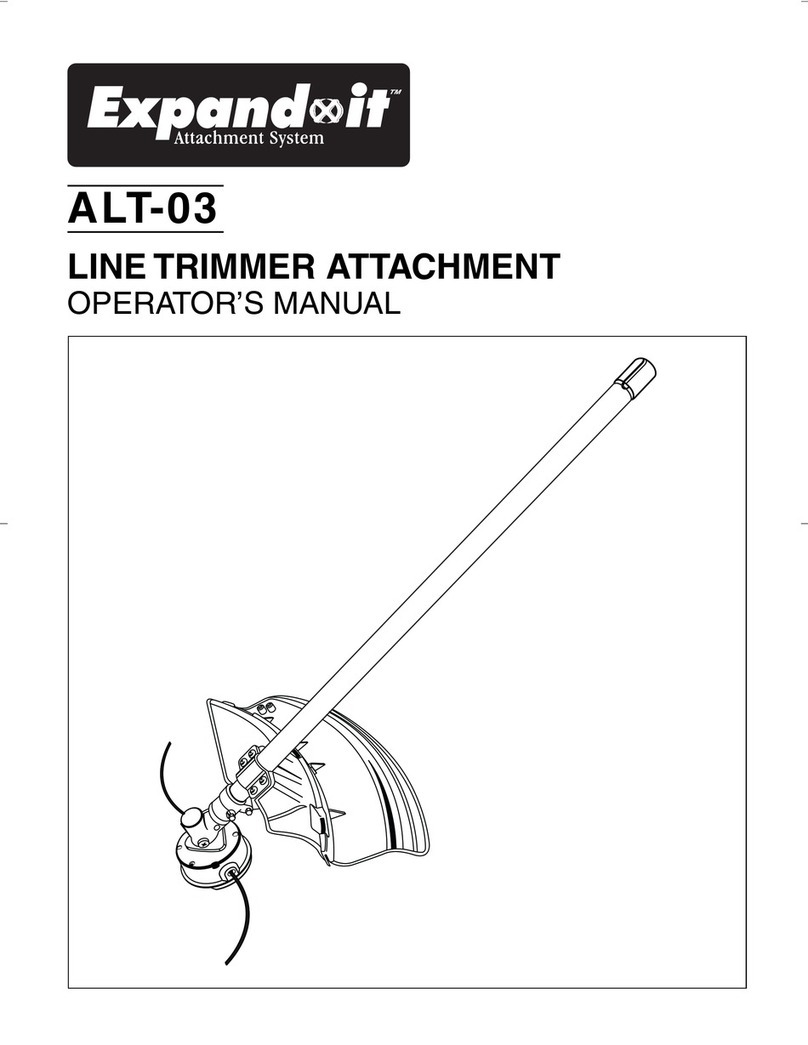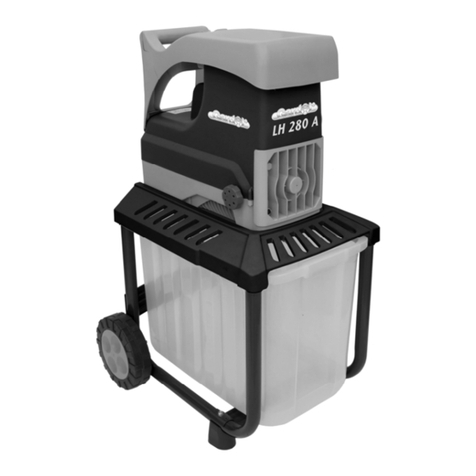Aero AerobiKA User manual

Oscillating Positive
Expiratory Pressure Device
Dispositif de pression expiratoire
positive par oscillations

EN
Aerobika* Oscillating Positive Expiratory Pressure Device. . . . . . . . . . . . . . . . . . . 3
FR
Dispositif de pression expiratoire positive par oscillations Aerobika*. . . . . . . . 5
8. . . . . . . . . . . . . . . . . . . . . . . . . . . . . . . . . . . . Aerobika*
AR
11� � � � � � � � � � � � � � � � � � � � � � � � � � � � � Aerobika*יתדונת יבויח יתפישנ ץחל רישכמ
HE
KO
Aerobika*진동호기양압장치 13
TH
Aerobika*. . . . . . . . . . . . . . . . . . . . . . . . . . . . . . . . .16
ZH
Aerobika*振動呼氣正壓裝置������������������������������� 18

1
1
2
A
D
EF
B
C
3
G
G
AR
A
B
C
D
E
F
G
HE
זראמה לש ןוילעה קלחה
A
םותסשה תינסחמ
B
זראמה לש ןותחתה קלחה
C
רזיילובנ רוביח תדוקנ
D
רוביחה תוינושל
E
היפ
F
תודגנתה ןווחמ
G
KO
A
상단케이스
B
밸브카트리지
C
하단케이스
D
네뷸라이저포트
E
결합탭
F
마우스피스
G
저항표시기
TH
A
B
C
D
E
F
G
ZH
A
頂部外殼
B
閥門卡匣
C
底部外殼
D
霧化器接口
E
接合卡舌
F
吸嘴
G
阻力指示
EN
A
Top Case
B
Valve Cartridge
C
Bottom Case
D
Nebulizer Port
E
Attachment Tabs
F
Mouthpiece
G
Resistance Indicator
FR
A
Boîtier supérieur
B
Cartouche à soupape
C
Boîtier inférieur
D
Raccord du nébuliseur
E
Pattes de xation
F
Embout buccal
G
Indicateur de résistance

2
41
3
2
4
5–6
5

3
EN
INTENDED USE
The Aerobika* Oscillating Positive Expiratory Pressure
device is intended for use as a Positive Expiratory
Pressure (PEP) device. The Aerobika* device may
also be used simultaneously with nebulized aerosol
drug delivery. The device is intended to be used by
patients capable of generating exhalation ow of
10 L/min for 3–4 seconds.
INDICATIONS
The Aerobika* Oscillating PEP device is an airway
clearance therapy device used to mobilize excess
lung secretions and improve breathing. It can be
used to manage respiratory conditions such as COPD,
bronchiectasis and Cystic Fibrosis.
Single patient use only.
CONTRAINDICATIONS
Use of the device is not recommended for the
following conditions:
• Patients unable to tolerate the increased work of
breathing
• Intracranial pressure (ICP) > 20 mm Hg
• Hemodynamic instability (blood pressure
instability)
• Recent facial, oral, or skull surgery or trauma
• Acute sinusitis
• Epistaxis (bleeding nose)
• Esophageal surgery
• Nausea
• Active hemoptysis (bleeding from lungs)
• Untreated pneumothorax (untreated collapsed
lung)
• Known or suspected tympanic membrane rupture
or other middle ear pathology
WARNINGS
Use of the device at excessive pressures may have
adverse eects. Expiratory pressures above 20 cm
H₂O in patients sensitive to increased transpulmonary
pressure may develop one or more of the adverse side
eects listed below. Expert clinical judgment should
be exercised in the selection of the appropriate
setting for each individual patient. Failure to match
the appropriate resistance setting on the Resistance
Indicator with the patient’s expiratory ow may
result in failure to achieve therapeutic objectives of
oscillatory PEP therapy or one or more adverse side
eects listed below.
Adverse reactions may include:
• Increased work of breathing that may lead to
hypoventilation and hypercarbia
• Increased cranial pressure
• Cardiovascular compromise
• Myocardial ischemia
• Decreased venous return
• Air swallowing with increased likelihood of
vomiting and aspiration
• Claustrophobia
• Pulmonary barotraumas
USE INSTRUCTIONS
Before use, ensure these instructions have been
read and are kept available at all times. If you have
questions about the performance or use of this
product, please contact your healthcare professional
prior to use. For device descriptions see page1, gure
1.
Warning: Do not leave the device unattended
with children. Contains small parts that can cause
choking.
DEVICE SET UP
The Aerobika* device resistance setting should
be set up by a healthcare professional using the
following steps:
1 Start with the Resistance Indicator at the middle
setting. (page1, gure 3)
2 With the patient in a comfortable seated position,
have them inhale through the device taking a deeper
breath than normal, but not to total lung capacity,
then exhale briskly but not forcefully through the
device.
3 Resistance should be set so exhalation lasts for
3–4 times longer than inhalation. Resistance can
be increased by moving the indicator to the left. To
reduce resistance, move the indicator to the right.
Note: Selection of the proper resistance setting will
produce the desired inspiratory:expiratory ow ratio
of 1:3 or 1:4 for 10–20 minutes without excess fatigue.
4 Patients should be reevaluated periodically or
with any change in status. As airways become
less congested, more resistance will be needed to
maintain inspiratory:expiratory ratios.
DEVICE USE
Treatments should be conducted twice daily or as
directed by your healthcare professional. Although
the Aerobika* device is orientation independent,
it is recommended that treatments be done in a
comfortably seated position. (page2, gure 4)
1 Carefully examine the device.
• If there is any visible dust or other debris inside,
then clean the device. Replace immediately if it is
damaged or has missing parts.
• Ensure the Resistance Indicator is set as
prescribed by your healthcare professional.
• Gently press the two halves together to make sure
the Attachment Tabs are engaged.
2 Put the mouthpiece in mouth and close lips around
it to ensure an eective seal. Make sure your hand
does not block the exhalation path on the back of the
device.

4
3 Inhale through the device taking a deeper breath
than normal, but do not totally ll your lungs. Hold
your breath for 2–3 seconds before exhaling.
4 Exhale actively, but not forcefully, through the
device. Ideally, exhalation should last 3–4 times
longer than inhalation. Keep your cheeks at and
rm to maximize treatment eectiveness. Ensure
you maintain a good seal on the mouthpiece for the
duration of the treatment.
Note: If you are unable to exhale through the device,
check the resistance setting or try cleaning the device
thoroughly.
5 Continue taking deep breaths and long exhalations
for 10–20 breaths, or as instructed by your healthcare
professional. After at least 10 breaths, perform 2–3
‘hu’ coughs to clear your airways. Your healthcare
professional will instruct you on the proper technique.
For maximum ecacy, try to suppress coughing until
the end of the treatment.
6 Repeat steps 2–5 for 10–20 minutes or as prescribed
by your healthcare professional.The entire procedure
should be performed at least twice a day on a regular
basis, and increased to 3–4 times per day if you are
producing a lot of mucus.
The goal is to keep your lungs clear and ventilatory
capacity up. Continue with treatments on a regular
basis even if you are bringing up just a little mucus.
USE WITH A NEBULIZER
The Aerobika* device may also be used with a
small volume nebulizer with a 22 mm tting. Your
healthcare professional will advise which medication
to use for combined treatments.
Medications which open the airways (eg. albuterol)
or help to thin mucus (eg. hypertonic saline) would
be good choices to use with the Aerobika* device
because they help to remove or thin the mucus in
your lungs.
Caution: Medications to stay in the lungs, like
antibiotics, should be taken with the nebulizer alone
after completing a treatment with the Aerobika*
device.
1 Ensure you have read and understood the
instructions provided with the nebulizer prior to
starting the treatment.
2 Ensure the nebulizer is set-up correctly and
medication has been added to the nebulizer cup.
Remove the mouthpiece (or mask) from the nebulizer.
3 Attach the nebulizer to the Nebulizer Port of the
Aerobika* device, as shown in gure 2(page 1).
4 Switch on the compressed air source, and complete
the combined treatment using the breathing
technique outlined above.
Notes:
• No adapter is required if used with the
AEROECLIPSE* brand of breath actuated
nebulizers.
• Ensure the nebulizer remains upright for proper
nebulization.
• Always ensure the Aerobika* device mouthpiece is
used, otherwise the device will not work properly.
(page1, gure 2)
• If used in combination with a nebulizer, the
Aerobika* device should be cleaned after each use
to remove any residue that may have deposited on
exhalation.
CLEANING AND DISINFECTING
INSTRUCTIONS
Healthcare professionals should always use clinical
judgment to select the appropriate cleaning and
disinfecting method and frequency, based on patient
needs.
If necessary, clean the Aerobika* device once daily.
Note: Proper and regular cleaning of the device is
important for it to work correctly.
1 DISASSEMBLY
i. Press the Attachment Tabs on either side of the
device. Holding the tabs in, gently pull up on the top
case until the two parts separate.
ii. Remove the valve cartridge. Do not disassemble
any part of the cartridge.
iii. To remove the mouthpiece, grip rmly and rotate
while pulling away from the device.
2 CLEANING
Clean the Aerobika* device using one of the two
following methods.
A
Soap and Water
i. Wash the four parts in a solution of tap water and
liquid dish detergent, allowing the parts to soak for
15 minutes. Agitate gently several times.
ii. Rinse with tap water.
iii. Shake the parts to remove any excess water.
Note: Tap water can be high in minerals which may
result in scale build-up in the device. If the local tap
water supply is high in minerals, then every month
soak the disassembled device in a solution of 1 cup
vinegar and 1 cup water for 1 hour followed by a
wash as normal.
B
Dishwasher
i. Secure the four parts in a basket on the top rack.
ii. Wash in a normal wash cycle with dishwasher
detergent and a rinse aid if available.
iii. Shake the parts to remove any excess water.
Note: Dishwashing with overly dirty dishes is not
recommended.
3 REASSEMBLY
i. Ensure parts have air dried thoroughly.
ii. Insert the valve cartridge into the bottom case. If
it does not slip easily into place, rotate 180° and try
again.
iii. Connect the top and bottom cases until
both Attachment Tabs “click” (this may occur

5
simultaneously). Ensure the tabs are engaged by
rmly pressing the two halves together.
iv. Reattach the mouthpiece.
4 DISINFECTION
If considered clinically necessary for the patient,
healthcare professionals can instruct the patient
to clean and disinfect the device following specic
methods and frequencies (after each use).
Prior to disinfection follow the disassembly and
cleaning instructions but do not reassemble the
device.
Disinfect the Aerobika* device using any one of the
following methods.
A
Electronic Steam Sterilizer
i. Place the four parts in an electronic steam sterilizer
and follow the manufacturer’s instructions for use.
ii. Remove from the unit and allow the parts to air dry
thoroughly before reassembly.
B
Boiling
i. Place the four parts in a pot with boiling water and
boil for 5 minutes.
Note: Place a small rack on the bottom of the pot to
prevent plastic parts from coming in contact with the
hot bottom.
ii. Remove from the water without touching the
water and allow parts to air dry thoroughly before
reassembly.
C
Microwave Steam Bag
i. Place the four parts in a microwave steam bag
(i.e. Quick-Clean†MicroSteam†bag) and follow the
manufacturer’s instructions for use.
Note: Position parts in bag as shown in Figure 5
(page 2).
ii. Remove from bag and allow parts to air dry
thoroughly before reassembly.
D
Isopropyl Alcohol
i. Soak the four parts in 70% isopropyl alcohol for
5minutes.
ii. Rinse thoroughly with sterile water.
iii. Allow to air dry thoroughly before reassembly.
E
Hydrogen Peroxide
i. Soak the four parts in 3% hydrogen peroxide for
30minutes.
ii. Rinse thoroughly with sterile water.
iii. Allow to air dry thoroughly before reassembly.
F
Bleach
i. Soak the four parts in a 1:50 bleach to water
solution (approximately 1 tablespoon bleach in 3¼
cups water) for 3 minutes.
Note: You may substitute a respiratory equipment
disinfectant (such as Milton†, Dodie†, Control III†or
Cidex†) for the bleach solution. Follow the disinfectant
instructions for use.
ii. Rinse thoroughly with sterile water.
iii. Allow to air dry thoroughly before reassembly.
NOTE
Any serious incident that has occurred in relation to
the device should be reported to the manufacturer
and the competent authority of the Member State,
the MHRA or the Saudi Food and Drug Authority, as
appropriate.
STORAGE
After the Aerobika* device is fully dry and assembled,
store in a clean plastic bag or container.
DISPOSAL
The device can be disposed of with domestic waste
unless this is prohibited by the disposal regulations
prevailing in the respective member countries.
ADDITIONAL INFORMATION
Use Temperature Range +15 °C to +40 °C
Storage Temperature Range -40 °C to +60 °C
• Product is free of Bisphenol A, Phthalates, Latex,
Lead and PVC.
FR
UTILISATION PRÉVUE
Le dispositif de pression expiratoire positive par
oscillations Aerobika* est destiné à être utilisé
comme dispositif de pression expiratoire positive
(PEP). Le dispositif Aerobika* peut également être
utilisé en même temps qu’un médicament en aérosol
administré à l’aide d’un nébuliseur. Le dispositif est
destiné à être utilisé par des patients capables de
générer un débit d’expiration de 10 L/min pendant
3 à 4 secondes.
INDICATIONS
Le dispositif de PEP par oscillations Aerobika*
est un dispositif thérapeutique de dégagement
des voies respiratoires utilisé pour mobiliser les
sécrétions pulmonaires excédentaires et améliorer
la respiration. Il peut être utilisé pour la prise en
charge des aections respiratoires comme la MPOC,
la bronchectasie et la brose kystique.
Utilisation chez un seul patient.
CONTREINDICATIONS
L’utilisation du dispositif n’est pas recommandée
dans les cas suivants :
• L’utilisation du dispositif n’est pas recommandée
dans les cas suivants :
• Patients incapables de tolérer tout eort
respiratoire accru
• Pression intracrânienne (PIC) > 20 mm Hg
• Instabilité hémodynamique (instabilité de la
tension artérielle)
• Chirurgie ou traumatisme récent du visage, de la
bouche ou du crâne
• Sinusite aiguë

6
• Épistaxis (saignement de nez)
• Chirurgie œsophagienne
• Nausées
• Hémoptysie active (saignement des poumons)
• Pneumothorax non traité (poumon collabé non
traité)
• Rupture connue ou suspectée de la membrane
tympanique ou autre pathologie de l’oreille
moyenne
AVERTISSEMENTS
L’utilisation du dispositif à des pressions excessives
peut avoir des eets indésirables. Les pressions
expiratoires supérieures à 20 cm H₂O chez les
patients sensibles à une pression transpulmonaire
accrue peuvent entraîner l’un ou plusieurs des eets
secondaires indésirables énumérés ci-dessous. Un
jugement clinique expert doit être exercé dans
la sélection du réglage approprié pour chaque
patient. Si le réglage de résistance sur l’indicateur
ne correspond pas au débit d’expiration du patient,
les objectifs du traitement par PEP par oscillations
pourraient ne pas être atteints; l’un ou plusieurs des
eets secondaires indésirables ci-dessous pourraient
aussi survenir.
Les eets indésirables peuvent comprendre :
• Une augmentation de l’eort respiratoire pouvant
conduire à l’hypoventilation et à l’hypercapnie
• Une augmentation de la pression crânienne
• Des troubles cardiovasculaires
• Une ischémie myocardique
• Une diminution du retour veineux
• Une déglutition d’air avec risque accru de
vomissement et d’aspiration
• Une claustrophobie
• Des barotraumatismes pulmonaires
MODE D’EMPLOI
Avant toute utilisation, s’assurer que les présentes
instructions ont été lues et qu’elles sont accessibles
en tout temps. En cas de questions sur les
performances ou l’utilisation de ce produit, s’adresser
à un professionnel de la santé avant de l’utiliser. Pour
l’identication des pièces du dispositif, voir la gure
1présentée à la page 1.
Avertissement : Ne pas laisser le dispositif sans
surveillance avec des enfants. Contient des petites
pièces qui peuvent causer un étouement.
PRÉPARATION DU DISPOSITIF
Le réglage de la résistance du dispositif Aerobika*
doit être eectué par un professionnel de la santé en
suivant les étapes suivantes :
1 Commencer par le réglage intermédiaire de
l’indicateur de résistance (page 1, gure 3).
2 Le patient étant en position assise confortable,
lui faire inspirer à travers le dispositif en prenant
une respiration plus profonde que la normale, mais
sans atteindre la capacité pulmonaire totale, puis le
faire expirer vivement, mais sans forcer à travers le
dispositif.
3 La résistance doit être réglée de manière à ce
que l’expiration dure 3 à 4 fois plus longtemps que
l’inhalation. La résistance peut être augmentée en
déplaçant l’indicateur vers la gauche. Pour réduire la
résistance, déplacer l’indicateur vers la droite.
Remarque : La sélection du réglage de résistance
approprié produira le rapport de débit d’inspiration/
expiration souhaité de 1:3 ou 1:4 pendant 10 à 20
minutes sans fatigue excessive.
4 Les patients doivent être réévalués périodiquement
ou lors de tout changement d’état. À mesure que les
voies respiratoires sont moins encombrées, une plus
grande résistance sera nécessaire pour maintenir le
rapport de débit d’inspiration/expiration.
UTILISATION DU DISPOSITIF
Les traitements doivent être eectués deux fois
par jour ou selon les directives du professionnel de
la santé. Bien que le dispositif Aerobika* s’utilise
indépendamment de la position du patient, il est
recommandé que les traitements soient eectués
lorsque le patient se trouve dans une position assise
confortable (page 2, gure 4)
1 Examiner attentivement le dispositif.
• S’il y a de la poussière ou d’autres débris visibles
à l’intérieur, nettoyer le dispositif. Remplacer
immédiatement le dispositif s’il est endommagé
ou si des pièces sont manquantes.
• S’assurer que l’indicateur de résistance est réglé
comme prescrit par le professionnel de la santé.
• Presser doucement les deux boîtiers ensemble
pour s’assurer que les pattes de xation sont bien
enclenchées.
2 Mettre l’embout buccal dans la bouche et fermer
les lèvres autour pour assurer une étanchéité ecace.
S’assurer que la main ne bloque pas le chemin
d’expiration à l’arrière du dispositif.
3 Inspirer à travers le dispositif en prenant une
respiration plus profonde que la normale, mais ne
pas remplir totalement les poumons. Retenir son
soue pendant 2 à 3 secondes avant d’expirer.
4 Expirer activement, mais pas avec force, à travers
le dispositif. Idéalement, l’expiration devrait durer 3
à 4 fois plus longtemps que l’inhalation. Garder les
joues plates et fermes pour maximiser l’ecacité
du traitement. Maintenir une bonne étanchéité
de l’embout buccal pendant toute la durée du
traitement.
Remarque : S’il n’est pas possible d’expirer à travers le
dispositif, vérier le réglage de la résistance ou tenter
de nettoyer soigneusement le dispositif.
5 Continuer à prendre des inspirations profondes et
à expirer longuement pendant 10 à 20 respirations,
ou selon les directives du professionnel de la santé.
Après au moins 10 respirations, eectuer 2 ou 3
toussotements pour dégager les voies respiratoires.

7
Le professionnel de la santé vous enseignera la
bonne technique. Pour une ecacité maximale,
tenter de réprimer la toux jusqu’à la n du traitement.
6 Répéter les étapes 2 à 5 pendant 10 à 20 minutes
ou comme indiqué par le professionnel de la santé.
La procédure complète doit être eectuée au moins
deux fois par jour de façon régulière et portée à 3-4
fois par jour en cas de production de beaucoup de
mucus.
L’objectif est de garder les poumons dégagés et une
capacité ventilatoire élevée. Continuer les traitements
de façon régulière, même en cas de production de
peu de mucus.
UTILISATION AVEC UN NÉBULISEUR
Le dispositif Aerobika* peut également être utilisé
avec un nébuliseur de petit volume doté d’un
raccord de 22 mm. Votre professionnel de la santé
vous conseillera sur les médicaments à utiliser pour
les traitements combinés.
Les médicaments qui ouvrent les voies respiratoires
(p. ex. l’albutérol) ou qui aident à éclaircir le mucus
(p. ex. les solutions salées hypertoniques) seraient de
bons choix à utiliser avec le dispositif Aerobika*, car
ils aident à éliminer ou à éclaircir le mucus dans les
poumons.
Mise en garde : Les médicaments qui restent dans
les poumons, comme les antibiotiques, doivent être
pris avec le nébuliseur seul après avoir terminé un
traitement avec le dispositif Aerobika*.
1 S’assurer d’avoir lu et compris le mode d’emploi
fourni avec le nébuliseur avant de commencer le
traitement.
2 S’assurer que le nébuliseur est correctement réglé
et que des médicaments ont été ajoutés dans la
coupelle du nébuliseur. Retirer l’embout buccal (ou le
masque) du nébuliseur.
3 Fixer le nébuliseur au raccord de nébuliseur du
dispositif Aerobika*, comme l’indique la gure 2
(page 1).
4 Mettre en marche la source d’air comprimé,
puis terminer le traitement combiné en utilisant la
technique respiratoire décrite ci-dessus.
Remarques :
• Aucun adaptateur n’est nécessaire si le dispositif
est utilisé avec les nébuliseurs actionnés par la
respiration de la marque AEROECLIPSE*.
• S’assurer que le nébuliseur reste en position
verticale pour une nébulisation adéquate.
• Toujours s’assurer que l’embout buccal du dispositif
Aerobika* est utilisé. Dans le cas contraire, le
dispositif ne fonctionnera pas correctement
(page1, gure 2)
• S’il est utilisé en combinaison avec un nébuliseur, le
dispositif Aerobika* doit être nettoyé après chaque
utilisation an d’éliminer tout résidu qui aurait pu
se déposer lors de l’expiration.
INSTRUCTIONS DE NETTOYAGE ET DE
DÉSINFECTION
Les professionnels de la santé doivent toujours faire
preuve de jugement clinique pour choisir la méthode
et la fréquence de nettoyage et de désinfection
appropriées, en fonction des besoins du patient.
Si nécessaire, nettoyer le dispositif Aerobika* une fois
par jour.
Remarque : Pour que le dispositif fonctionne
correctement, il est important de le nettoyer
adéquatement et régulièrement.
1 DÉMONTAGE
i. Appuyer sur les pattes de xation situées de
chaque côté du dispositif. En maintenant les pattes
appuyées vers l’intérieur, tirer doucement sur le
boîtier supérieur jusqu’à ce que les deux boîtiers se
séparent.
ii. Retirer la cartouche à soupape. Ne pas démonter
les pièces de la cartouche.
iii. Pour retirer l’embout buccal, il faut le saisir
fermement et le faire tourner tout en l’éloignant du
dispositif.
2 NETTOYAGE
Nettoyer le dispositif Aerobika* à l’aide de l’une des
deux méthodes suivantes.
A
Eau savonneuse
i. Laver les quatre pièces dans une solution
composée d’eau du robinet et de détergent à vaisselle
liquide, en laissant tremper les pièces pendant 15
minutes. Agiter doucement plusieurs fois.
ii. Rincer à l’eau du robinet.
iii. Secouer les pièces pour éliminer tout excès d’eau.
Remarque : L’eau du robinet peut être riche en
minéraux, ce qui peut entraîner une accumulation
de calcaire dans le dispositif. Si l’eau du robinet est
riche en minéraux dans votre région, faire tremper
chaque mois le dispositif démonté dans une solution
composée de 1 tasse de vinaigre et de 1 tasse d’eau
pendant 1 heure, puis le laver normalement.
B
Lave-vaisselle
i. Placer les quatre pièces dans un panier placé dans
le bac supérieur.
ii. Laver au cycle de lavage normal avec du détergent
pour lave-vaisselle et un produit de rinçage si
possible.
iii. Secouer les pièces pour éliminer tout excès d’eau.
Remarque : Il n’est pas recommandé de laver les
pièces avec de la vaisselle très sale.
3 REMONTAGE
i. S’assurer que les pièces ont entièrement séché à
l’air.
ii. Insérer la cartouche à soupape dans le boîtier
inférieur. Si elle ne s’insère pas facilement en place, la
faire pivoter de 180° et essayer à nouveau.

8
iii. Assembler les boîtiers supérieur et inférieur jusqu’à
ce que les deux pattes de xation s’enclenchent
en faisant entendre chacune un clic (cela peut se
produire simultanément). S’assurer que les pattes
sont bien engagées en pressant fermement les deux
boîtiers ensemble.
iv. Remettre l’embout buccal en place.
4 DÉSINFECTION
Si cela est jugé cliniquement nécessaire pour le
patient, les professionnels de la santé peuvent
demander au patient de nettoyer et de désinfecter
le dispositif selon des méthodes et des fréquences
spéciques (après chaque utilisation).
Avant la désinfection, suivre les instructions de
démontage et de nettoyage, mais ne pas remonter
le dispositif.
Désinfecter le dispositif Aerobika* à l’aide de l’une
des méthodes suivantes.
A
Stérilisateur à vapeur électronique
i. Placer les quatre pièces dans un stérilisateur à
vapeur électronique, puis suivre le mode d’emploi du
fabricant.
ii. Sortir les pièces du stérilisateur et bien les laisser
sécher à l’air avant le remontage.
B
Eau bouillante
i. Placer les quatre pièces dans une casserole
contenant de l’eau bouillante, puis faire bouillir
pendant 5 minutes.
Remarque : Placer une petite grille au fond de la
casserole pour éviter que les pièces en plastique
n’entrent en contact avec le fond chaud.
ii. Retirer les pièces de l’eau sans les toucher, puis
bien les laisser sécher à l’air avant le remontage.
C
Sac à vapeur allant au micro-ondes
i. Placer les quatre pièces dans un sac à vapeur
allant au micro-ondes (c.-à-d. le sac Quick-Clean†
MicroSteam†) et suivre le mode d’emploi du fabricant.
Remarque : Placer les pièces dans le sac comme
l’indique la gure 5(page 2).
ii. Sortir les pièces du sac et bien les laisser sécher à
l’air avant le remontage.
D
Alcool isopropylique
i. Immerger les quatre pièces dans de l’alcool
isopropylique à 70 % pendant 5 minutes.
ii. Rincer abondamment à l’eau stérile.
iii. Bien laisser sécher à l’air avant le remontage.
E
Peroxyde d’hydrogène
i. Immerger les quatre pièces dans du peroxyde
d’hydrogène à 3 % pendant 30 minutes.
ii. Rincer abondamment à l’eau stérile.
iii. Bien laisser sécher à l’air avant le remontage.
F
Eau de Javel
i. Immerger les quatre pièces dans une solution
composée d’une part d’eau de Javel diluée dans 50
parts d’eau (1 cuillère à soupe d’eau de Javel dans 3¼
tasses d’eau) pendant 3 minutes.
Remarque : La solution d’eau de Javel peut être
remplacée par un désinfectant pour appareils
respiratoires (comme Milton†, Dodie†, Control III†ou
Cidex†). Suivre le mode d’emploi du désinfectant.
ii. Rincer abondamment à l’eau stérile.
iii. Bien laisser sécher à l’air avant le remontage.
REMARQUE
Tout incident grave survenu en rapport avec le
dispositif doit être signalé au fabricant et à l’autorité
compétente du pays membre, à la MHRA ou à la
Saudi Food and Drug Authority, le cas échéant.
ENTREPOSAGE
Une fois le dispositif Aerobika* complètement sec et
assemblé, le ranger dans un sac ou un récipient en
plastique propre.
MISE AU REBUT
Le dispositif peut être jeté avec les déchets ménagers,
sauf si cela est interdit par la réglementation de mise
au rebut en vigueur dans les pays membres respectifs.
INFORMATIONS SUPPLÉMENTAIRES
Températures d’utilisation tolérées :
+15 °C à +40 °C
Températures d’entreposage tolérées :
-40 °C à +60 °C
• Ce produit ne contient pas de bisphénol A (BPA), de
phtalates, de latex, de plomb ou de PVC.
AR
Aerobika*
Aerobika* .(PEP)
.
3-4 / 10
.
Aerobika*
.
.
.
:
• • 20 < (ICP) •( ) • • •( )

9
• • •( ) •( ) •
.
20
.
.
.
•
• •
• • • • •
.
.
.1 1
. :
.
Aerobika*
:
1
(3 1) . 2
.
3
. 3-4
. .
: :
20-10 4:1 3:1
.
4
.
. :
Aerobika*
(4 2) .
1
.
•.
. •. •. 2
. .
3
. 2-3 .
4
.
. 3-4
.
.
:
.
5
10-20
10 .
. 2-3" "
.
.
6
10-20 2-5
.
3-4
.
.
.
Aerobika*
. 22
.
( )
( )
. Aerobika*
:
.Aerobika*
1
. 2
.
. ( )
3
Aerobika*
.(1) 2
4
.
:
•
.AEROECLIPSE* •. • Aerobika*
(2 1) . • Aerobika*
.

10
.
. Aerobika*
. :
1
i. .
.
ii.. .
iii..
2
. Aerobika*
A
i.
. . 15
ii..
iii..
:
.
.
B
i..
ii.
.
iii..
:
.
3
i..
ii. .
. 180
iii.
.( ) ""
.
iv..
4
.( )
.
. Aerobika*
A
i.
.
ii..
B
i.. 5
:
.
ii.
.
C
i. )
(Quick-Clean†MicroSteam†
.
.(2) 5 :
ii..
D
i.. 5 70%
ii..
iii..
E
i.30 3%
.
ii..
iii..
F
i.) 50:1
. 3 ( ¼3
Milton†) :
. (Cidex† Control III† Dodie†
.
ii..
iii..
(MHRA)
.
Aerobika*
.
.
. +40 +15
+60 -40
• (BPA)
.

11
HE
דעוימ שומיש
שמשל דעונ Aerobika*יתדונת יבויח יתפישנ ץחל רישכמ
שמתשהל ןתינ �)PEP( הפישנ ךלהמב יבויח ץחל רישכמכ
לוסוראא הפורת ןתמ םע תינמז-וב םג Aerobika*רישכמב
םילגוסמה םילפוטמ שמשל דעונ רישכמה �רזיילובנ תועצמאב
�תוינש 3-4ךשמל הקד/'ל 10 לש הפישנ םרז רוציל
:שומיש תויוותה
לופיטל רישכמ אוה Aerobika*יתדונתה PEP-ה רישכמ
תופדוע תושרפה קוליסל שמשמה המישנה יכרד יוניפב
לופיטב שמשל לוכי רישכמה �המישנה רופישלו תואירהמ
תובחרתה ,תינורכ תיתמיסח תואיר תלחמ ןוגכ המישנ תולחמב
�סיזורביפ קיטסיסו תונופמיס
�דבלב דחא לפוטמב שומישל
דגנ תויוותה
:םיאבה םיבצמב ץלמומ וניא רישכמב שומישה
•רבגומ יתמישנ ץמאמב דומעל םילגוסמ םניאש םילפוטמ
•תיפסכ מ"מ 20 > )ICP( יתלוגלוג-ךות ץחל
•)םדה ץחל לש תוביצי רסוח( ימנידומה תוביצי רסוח
•הנורחאל ועריאש תלוגלוגב וא הפב ,םינפב המוארט וא חותינ
•הפירח סיטיסוניס
•ףאהמ םומיד
•טשווב חותינ
•הליחב
•)תואירהמ םומיד( ליעפ ימד לועיש
•)לפוט אלש האיר טמת( לפוט אלש ריווא הזח
•לש תרחא היגולותפ וא ,ערקל דשח וא ףותה רועב עודי ערק
הנוכיתה ןזואה
תורהזא
�יאוול תועפותל ליבוהל יושע םיזרפומ םיצחלב רישכמב שומיש
םישיגרה םילפוטמ ברקב H₂O מ"ס 20 לעמ לש הפישנ יצחל
חתפל םילולע רבגומ )ירנומלופ-סנרט( יתאיר-סנרט ץחלל
לכ רובע �ןלהל תוטרופמה יאוולה תועפותמ רתוי וא תחא
תושעהל הכירצ תומיאתמה לופיטה תורדגה תריחב ,לפוטמ
לש הנוכנ אל המאתה �החמומ לש ינילק תעד לוקיש ךותמ
לפוטמה לש הפישנה תמירזל ןונווכה ןווחמב תודגנתהה תרדגה
לופיט לש תוילופיטה תורטמה תגשהב ןולשיכל ליבוהל לולע
יאוולה תועפותמ רתוי וא תחאל םורגל וא יתדונתה PEP-ה
�ןלהל תוטרופמה
לולכל תויושע יאוולה תועפות
•ףדועלו רורווא תתל ליבוהל לולעה רבגומ יתמישנ ץמאמ
םדב ינצמח וד ןמחפ
•רבגומ יתלוגלוג ץחל
•םדה ילכו בלה תכרעמב העיגפ
•בלה רירש לש הימכסיא
•ידירווה רזחהב הדירי
•היצריפסאלו תואקהל רתוי ההובג תוריבס םע ריווא תעילב
•היבופורטסואלק
•תיתאיר המוארטוראב
שומיש תוארוה
גשיהב ןהילע רומשו תוארוהה תא אורקל דפקה ,שומישה ינפל
רצומב שומישה וא םיעוציבה יבגל תולאש ךל שי םא �דימת די
רובע �שומישה ינפל ךלש יאופרה עוצקמה שיא םע רשק רוצ ,הז
�1רויא ,1דומע האר ,רישכמה ירואית
תברקב החגשה אלל רישכמה תא ריאשהל ןיא :הרהזא
�קנחל םורגל םילולעש םינטק םיקלח ליכמ �םידלי
רישכמה תרדגה
ידי-לע השעית Aerobika*רישכמ לש תודגנתהה תרדגה
:םיאבה םיבלשה יפל יאופרה תווצה
1
רויא ,1דומע( �תודגנתהה ןווחמב תיעצמאה הרדגהב לחתה
)3
2
ךרד ףואשל ונממ שקב ,תוחונב בשוי לפוטמה רשאכ
שמתשהל ילבמ לבא ,ליגרהמ רתוי הקומע הפיאש רישכמה
אל לבא ,תוריהמב ףושנל ןכמ רחאלו ,האלמה האירה תלוביקב
�רישכמה ךרד הקזוחב
3
3-4יפ הכורא היהת הפישנהש ךכ תודגנתהה תא רידגהל שי
ןווחמה תזזה ידי-לע תודגנתהה תא לידגהל ןתינ �הפיאשהמ
�הנימי ןווחמה תא זזה ,תודגנתהה תא ןיטקהל ידכ �הלאמש
בצק סחיל איבת המיאתמה תודגנתהה תרדגה תריחב :הרעה
אלל תוקד 10-20 ךשמל ,1:4וא 1:3לש יוצר הפישנ:הפיאש
�רתי תופייע
4
רחאל וא תעל תעמ םילפוטמה לש שדחמ הכרעה עצבל שי
תוחפל תוכפוה המישנה יכרד רשאכ �לפוטמה בצמב יוניש לכ
יסחי לע רומשל ידכ רתוי הבר תודגנתהב ךרוצ היהי ,תושודג
�הפישנ : הפיאש
רישכמב שומישה
תויחנהל םאתהב וא םויב םיימעפ םילופיטה תא עצבל שי
תולת אלל דבוע Aerobika*רישכמש תורמל �יאופרה תווצה
�החונינ הבישי תחונתב םילופיטה תא עצבל ץלמומ ,תוינוויכב
)4רויא ,2דומע(
1
�רישכמה תא הדיפקב קודב
•תא הקנ ,םינפב רחא ךולכל וא ןיעל הארנ קבא שי םא
םא וא םגפנ אוה םא ידיימ ןפואב ותוא ףלחה �רישכמה
�םיקלח וב םירסח
•לופיטה תינכותל םאתהב רדגומ תודגנתהה ןווחמש אדו
�יאופרה תווצה ידי-לע הנתינש
•תליענ תא אדוול ידכ דחיב םיאצחה ינש לע תונידעב ץחל
�רוביחה תוינושל
2
אדוול ידכ הביבסמ םייתפשה תא רוגסו הפל היפה תא סנכה
בגב הפישנה ביתנ תא תמסוח הניא ךדיש אדו �הליעי המיטא
�רישכמה
3
אלמת לא לבא ,ליגרהמ הקומע הפיאש רישכמה ךרד ףאש
ינפל תוינש 2-3ךשמל המישנה תא רוצע �ףוסה דע תואירה תא
�הפישנה

12
4
ןפואב �רישכמה ךרד ,הקזוחב אל לבא ,ליעפ ןפואב ףושנ
�הפיאשהמ 3-4יפ הכורא תויהל הרומא הפישנה ,ילאדיא
תוליעי תא לידגהל ידכ תוביציו תוחוטש ךייחל לע רומש
�לופיטה ךרוא לכל היפה ביבס הבוט המיטא לע דפקה �לופיטה
תרדגה תא קודב ,רישכמה ךרד ףושנל לגוסמ ךניא םא :הרעה
�רישכמה תא בטיה תוקנל הסנ וא תודגנתהה
5
ךשמל תוכשוממ תופישנו תוקומע תומישנ תחקל ךשמה
רחאל �יאופרה תווצה ךתוא החנהש יפכ וא ,תומישנ 10-20
החיל תאצוהל םילועיש 2-3םוזיל ךילע ,תוחפל תומישנ 10
יבגל ךתוא החני יאופרה תווצה �המישנה יכרד תא תוקנל ידכ
םילועישה תא אכדל הסנ ,תיברמ תוליעיל �המיאתמה הקינכטה
�לופיטה ףוסל דע
6
תינכותל םאתהב וא תוקד 10-20 ךשמל 5-7םיבלש לע רוזח
רומא ולוכ ךילהה �יאופרה תווצה ידי-לע הנתינש לופיטה
3-4-ל תולעל שיו ,עובק סיסב לע םויב םיימעפ תוחפל עצבתהל
�החיל לש תולודג תויומכ רציימ התא םא םויב םימעפ
�המישנה תלוביק תאלעהו תויקנ תואיר לע הרימש איה הרטמה
טעמ רציימ התא םא םג עובק סיסב לע םילופיטה םע ךשמה
�החיל
רזיילובנ םע שומיש
ןטק חפנב רזיילובנ םע םג Aerobika*רישכמב שמתשהל ןתינ
�מ"מ 22 לש רוביח םע
שמתשהל שי הבש הפורתה יבגל ךתוא החני ךב לפטמה אפורה
�םיבלושמ םילופיטב
)לורטובלא ,המגודל( המישנה יכרד תא תוחתופש תופורת
)תינוטרפיה ןיילס תסימת ,המגודל( החילה לולידב תורזוע וא
תורזוע ןהש םושמ Aerobika*רישכמ םע שומישל תוצלמומ
�תואירהמ החילה לש האצוה וא לולידב
ןוגכ ,תואירב ראשיהל תורומאש תופורת :תוריהז
תמלשה רחאל ,דבלב רזיילובנה םע לוטיל שי ,הקיטויביטנא
�Aerobika*רישכמ םע לופיטה
1
רזיילובנה םע דחי וקפוסש תוארוהה תא ןיבהלו אורקל דפקה
�לופיטה תלחתה ינפל
2
תיסוכל הסנכוה הפורתהשו הכלהכ ןקתומ רזיילובנהש אדו
�רזיילובנהמ )הכסמה תא וא( הייפה תא רסה �רזיילובנה
3
רישכמ לש רזיילובנל רוביחה תדוקנל רזיילובנה תא רבח
�)1דומע( 2רויאב גצומש יפכ ,Aerobika*
4
בלושמה לופיטה תא םלשהו ,ריוואה סחדמ תא לעפה
�ליעל תניוצמה המישנה תקינכט תועצמאב
:תורעה
•ןיא , AEROECLIPSE*גתוממ רזיילובנב שמתשמ התא םא
�םאתמב שמתשהל ךרוצ
•�הניקת היצזילובנ ךרוצל יכנא ראשנ רזיילובנהש אדו
•תרחא ,Aerobika רישכמה לש היפב דימת שמתשהל שי
)2רויא ,1דומע( �הרושכ לעפי אל רישכמה
•רישכמ תא תוקנל שי ,רזיילובנ םע בולישב שומיש תעב
ןכתייש תויראש ריסהל ידכ שומיש לכ רחאל Aerobika*
�תופישנה ןמזב ועקש
יוטיחו יוקינ תוארוה
רוחבל ידכ ינילק תעד לוקיש ליעפהל דימת ךירצ יאופרה תווצה
םאתהב ,תורידתה תאו המיאתמה יוטיחהו יוקינה תטיש תא
�לפוטמה יכרוצל
�םויב תחא םעפ Aerobika*רישכמ תא הקנ ,ךרוצה תדימב
ידכ רידס ןפואב רישכמה לש םלוה יוקינ עצבל בושח :הרעה
�הניקת הרוצב לעפיש
קוריפ 1
i.ךות �רישכמה ידצמ דחא לכב רוביחה תוינושל לע ץחל
זראמה תא תונידעב ךושמ ,םינפ יפלכ תוינושלה לע הציחל
�ודרפיי םיקלחה ינשש דע ןוילעה
ii.�תינסחמה יקלח תא קרפל ןיא �םותסשה תינסחמ תא רסה
iii.הכישמ ךות בבוסו הקזוחב סופת ,היפה תא ריסהל ידכ
�רישכמהמ קחרה
יוקינ 2
תוטישה יתשמ תחא תועצמאב Aerobika*רישכמ תא הקנ
�תואבה
A
םימו ןובס
i.ילזונ רמוחו זרב ימ לש הסימתב םיקלחה תעברא תא ףוטש
תולק ענענ �תוקד 15 ךשמל םיקלחה תא הרשהו ,םילכ יוקינל
�םימעפ רפסמ
ii.�זרב ימב ףוטש
iii.�םימה יפדוע תא ריסהל ידכ םיקלחה תא רענ
לולע רבדהו םילרנימב םירישע תויהל םייושע זרב ימ :הרעה
םיימוקמה זרבה ימ םא �רישכמב תינבא תורבטצהל םורגל
קרופמה רישכמה תא שדוח ידמ הרשה ,םילרנימב םירישע
ןכמ רחאלו ,העש ךשמל םימ סוכו ץמוח סוכ לש הסימתב
�ליגרכ ףוטש
B
םילכ חידמ
i.�ןוילעה ףדמב לסל םיקלחה תעברא תא סנכה
ii.לזונו םילכ חידמל יוקינ רמוח םע ליגר הפיטש רוזחמב ףוטש
�ןתינ םא ,הקרבה
iii.�םימה יפדוע תא ריסהל ידכ םיקלחה תא רענ
םיכלכולמ םילכ םע דחי םילכה חידמב חידהל ץלמומ אל :הרעה
�דואמ
שדחמ הבכרה 3
iv.�ריוואב בטיה ושבייתה םיקלחהש אדו
v.םא �ןותחתה זראמה ךותל םותסשה תינסחמ תא סנכה
הסנו 180°-ב בבוס ,המוקמל תולקב הקילחמ הניא תינסחמה
�בוש
vi.יתשש דע ןותחתה זראמה תאו ןוילעה זראמה תא רבח
-וב תורקל יושע הז( השיקנב ןמוקמב ולעניי רוביחה תוינושל
ינש לע הקזוחב הציחל ידי-לע תולוענ תוינושלהש אדו �)תינמז
�דחיב םיאצחה
vii.�הייפה תא שדחמ רבח
יוטיח 4
תווצה ,לפוטמה רובע תינילק הניחבמ יחרכהל בשחנ רבדה םא
רישכמה תא אטחלו תוקנל לפוטמה תא תוחנהל לוכי יאופרה
�)שומיש לכ רחאל( תויפיצפס תורידתלו תוטישל םאתהב

13
רבחת לא לבא ,יוקינהו קוריפה תוארוה יפל לעפ ,יוטיחה ינפל
�שדחמ רישכמה תא
תחאב שומיש תועצמאב Aerobika*רישכמ תא אטח
�תואבה תוטישהמ
A
ילמשח םידא רקעמ
i.לעפו ילמשח םידא רקעמל םיקלחה תעברא תא סנכה
�ןרציה לש שומישה תוארוהל םאתהב
ii.ינפל ריוואב בטיה שבייתהל םיקלחל חנהו הדיחיהמ אצוה
�שדחמ הבכרהה
B
החתרה
i.חתרהו םיחתור םימ םע ריסל םיקלחה תעברא תא סנכה
�תוקד 5ךשמל
יקלחמ עונמל ידכ ריסה תיתחתב ןטק הלתמ חנה :הרעה
�המחה תיתחתה םע עגמב אובל קיטסלפה
ii.שבייתהל םיקלחל חנהו םימב תעגל ילבמ םימהמ אצוה
�שדחמ הבכרהה ינפל ריוואב בטיה
C
לגורקימל יודיא תיקש
i.רוקיעל תדחוימ םידא תיקשל םיקלחה תעברא תא סנכה
)Quick-Clean†MicroSteam†תיקש ,המגודל( לגורקימב
�ןרציה לש שומישה תוארוהל םאתהב לעפו
5רויאב גצומש יפכ תיקשב םיקלחה תא םקמ :הרעה
�)2דומע(
ii.ינפל ריוואב בטיה שבייתהל םיקלחל חנהו תיקשהמ אצוה
�שדחמ הבכרהה
D
לוהוכלא ליפורפוזיא
i.70% לוהוכלא ליפורפוזיאב םיקלחה תעברא תא הרשה
�תוקד 5ךשמל
ii.�םיילירטס םימב בטיה ףוטש
iii.�שדחמ הבכרהה ינפל ריוואב בטיה שבי
E
ןצמח ימ
i.�תוקד 30 ךשמל 3% ןצמח ימב םיקלחה תעברא תא הרשה
ii.�םיילירטס םימב בטיה ףוטש
iii.�שדחמ הבכרהה ינפל ריוואב בטיה שבי
F
הקימונוקא
i.סחיב םימו הקימונוקא תסימתב םיקלחה תעברא תא הרשה
3ךשמל )םימ תוסוכ 3¼-ב ךרעל הקימונוקא ףכ( 1:50 לש
�תוקד
תכרעמל דויצל דחוימ יוטיח רמוחב ףילחהל ןתינ :הרעה
)†Cidex וא †Control III ,
†Dodie ,
†Milton ןוגכ( המישנה
שומישה תוארוהל םאתהב לעפ �הקימונוקאב שומישה םוקמב
�יוטיחה רמוח לש
ii.�םיילירטס םימב בטיה ףוטש
iii.�שדחמ הבכרהה ינפל ריוואב בטיה שבי
הרעה
ןרציל חוודל שי ןקתהל רשקב שחרתהש יניצר עוריא לכ לע
ןוזמה תושרל וא MHRA-ל ,הרבחה הנידמב תכמסומה תושרלו
�הרקמה יפל ,תידועסה תופורתהו
ןוסחא
שי ,בכרוהו אלמ ןפואב שבייתה Aerobika*רישכמש רחאל
�םייקנ לכמב וא קיטסלפ תיקשב ןסחאל
הכלשה
םא אלא ,תיתיבה תלוספה םע דחי רישכמה תא ךילשהל ןתינ
�םיימוקמה הפשאה יוניפ יקוח יפל רוסא רבדה
ףסונ עדימ
+40 °Cדע +15 °C שומיש תרוטרפמט חווט
+60 °Cדע - 40 °C ןוסחא תרוטרפמט חווט
•,סקטל ימוג ,םיטאלאתפ ,Aלונפסיב ליכמ וניא הז רצומ
�PVC-ו תרפוע
KO
사용 목적
Aerobika* 진동 호기 양압 장치는 호기 양압 (PEP)
장치로 사용됩니다 Aerobika* 장치는 분무 에어로졸
약물전달과동시에사용할수도있습니다이장치는3~4
초동안10L/min의호기유량을생성할수있는환자에게
사용하도록제작되었습니다
적응증
Aerobika* 진동 PEP 장치는 과도한 폐 분비물을
배출하고호흡을개선하기위해사용되는기도청결요법
장치입니다COPD,기관지확장증및낭성섬유증과같은
호흡기질환을관리하는데사용할수있습니다
단일환자전용입니다
금기사항
다음과 같은 증상에는 장치를 사용하지 않는 것이
좋습니다
• 호흡증가를견디기힘들어하는환자
• 두개내압력(ICP)>20mmHg
• 혈류역학적으로불안정(혈압불안정)
• 최근안면,구강또는두개골의수술또는외상
• 급성부비동염
• 비출혈(코피)
• 식도수술
• 메스꺼움
• 활성객혈(폐출혈)
• 치료되지않은기흉(치료되지않은폐허탈)
• 고막파열이나기타중이의병리가알려져있거나
의심되는경우
경 고
과도한 압력으로 장치를 사용하면 부작용이 발생할 수
있습니다 경폐 압력 증가에 민감한 환자의 호기 압력이
20cmH₂O를 초과하면 아래 나열된 부작용 중 하나
이상이발생할수있습니다각환자에대한적절한설정을
선택할 때 전문가의 임상적 판단이 있어야 합니다 저항
조절 표시기의 적절한 저항 설정을 환자의 호기 흐름에
맞추지 못하면 진동 PEP 요법의 치료 효과를 보지
못하거나 아래에 나열된 부작용 중 하나 이상을 초래할
수있습니다

14
부작용에는다음이포함될수있습니다
• 호흡저하및고탄산혈증으로이어질수있는호흡증가
• 두개골압력증가
• 심혈관손상
• 심근허혈
• 정맥환류감소
• 구토및흡인가능성이높은공기삼킴증
• 폐소공포증
• 폐압력손상
사용 지침
사용하기 전에 이 지침을 읽고 항상 사용할 수 있도록
하십시오이제품의성능또는사용에대한질문이있는
경우사용하기전에의료전문가에게문의하십시오장치
설명은1페이지의그림을참조하십시오 1
경고:장치를어린이와함께방치하지마십시오질식을
일으킬수있는작은부품들이포함되어있습니다
장치 설정
Aerobika* 장치의 저항 설정은 다음 단계에 따라 의료
전문가가설정해야합니다
1 중간 설정에서 저항 표시기로 시작합니다 (1페이지,
그림 3)
2 환자가편안한자세로앉아있는상태에서,장치를통해
정상적인호흡보다깊게,그러나총폐용량은아닌상태로
숨을 들이마신 다음, 장치를 통해 강압적이지는 않도록
세게숨을내쉽니다
3 저항은 호기가 흡기보다 3~4배 더 오래 지속되도록
설정해야 합니다 표시기를 왼쪽으로 움직여 저항을
증가시킬 수 있습니다 저항을 감소시키려면 표시기를
오른쪽으로움직입니다
참고: 적절한 저항 설정을 선택하면 과도한 피로 없이
10~20분 동안 1:3 또는 1:4의 원하는 흡기:호기 흐름
비율이생성됩니다
4 환자를 주기적 또는 상태 변화에 따라 재평가해야
합니다 기도의 막힘이 덜해지면, 흡기:호기 비율을
유지하기위해더많은저항이필요합니다
장치 사용
치료는매일두번또는담당의료전문가의지시에따라
수행해야 합니다 Aerobika* 장치는 방향과 무관하며
편안하게앉은 자세로 치료하는 것이 좋습니다(2페이지,
그림 4)
1 장치를주의깊게검사합니다
• 내부에눈에띄는먼지나기타이물질이있는경우
장치를세척하십시오손상되거나누락된부품이
있으면즉시교체하십시오
• 담당의료전문가가처방한대로저항표시기가
설정되어있는지확인합니다
• 두개의반쪽케이스를부드럽게눌러결합탭이
끼워졌는지확인합니다
2 마우스피스를 입에 넣고 입술을 다물어 효과적으로
밀봉되도록 합니다 장치 뒷면의 호기 경로를 손으로
막지는않는지확인하십시오
3 장치를 통해 정상적인 호흡보다 깊게, 그러나 총 폐
용량은아닌상태로숨을들이마십니다숨을2~3초동안
참은후내쉽니다
4 장치를 통해 숨을 강압적이지는 않도록 적극적으로
내쉽니다호기가흡기보다3~4배더오래지속되는것이
가장좋습니다치료효과를극대화하려면뺨을평평하고
단단하게유지하십시오치료기간동안마우스피스가잘
밀봉되어있어야합니다
참고: 장치를 통해 숨을 내쉬지 못할 경우 저항 설정을
확인하거나장치를깨끗하게세척해보십시오
5 10~20회 또는 담당 의료 전문가의 지시에 따라
심호흡과 긴 호기를 계속합니다 최소 10회 호흡한 후
가쁜 기침(hucoughs)을 2~3회 실시하여 기도를
비웁니다 담당 의료 전문가가 적절한 기법에 대해 알려
드릴것입니다효과를극대화하려면치료가끝날때까지
기침을억제하십시오
6 5~7단계를 10~20분 동안 또는 담당 의료 전문가가
처방한대로반복합니다전체시술은하루에두번이상
정기적으로 수행해야 하며, 점액이 많이 발생하는 경우
하루에3~4번으로증가해야합니다
목표는 폐를 깨끗하게 유지하고 환기 능력을 높이는
것입니다 점액이 적게 나오더라도 정기적으로 치료를
계속하십시오
네뷸라이저와 함께 사용
Aerobika* 장치는 22mm의 피팅이 있는 작은 용량의
네뷸라이저와 함께 사용할 수도 있습니다 담당 의료
전문가가 복합 치료에 사용할 약물을 조언해 드릴
것입니다
기도(예:알부테롤)를열거나점액을묽게하는데도움이
되는약물(예:고장성식염수)은폐의점액을제거하거나
묽게 하는 데 도움이 되므로 Aerobika* 장치에
사용하기에적합합니다
주의:항생제와같이폐에머무르는약물은Aerobika*
장치를 사용한 치료를 마친 후 네뷸라이저 단독으로
복용해야합니다
1 치료를 시작하기 전에 네뷸라이저와 함께 제공된
지침을읽고이해했는지확인하십시오
2 네뷸라이저가 올바르게 설정되고 약물이 네뷸라이저
컵에 추가되었는지 확인합니다 네뷸라이저에서
마우스피스(또는마스크)를분리합니다
3 그림 3(1페이지)과 같이 네뷸라이저를 Aerobika*
장치의네뷸라이저포트에 2연결합니다
4 압축 공기 공급원을 켜고 위에 설명된 호흡 기법을
사용하여네뷸라이저와결합된치료를완료합니다
참고:
• AEROECLIPSE*브랜드의호흡작동식네뷸라이저를
사용할경우어댑터가필요하지않습니다
• 네뷸라이저가적절한분무치료를위해똑바로
세워졌는지확인합니다
• 항상Aerobika*장치마우스피스를사용해야합니다
그렇지않으면장치가제대로작동하지않습니다(1
페이지,그림 2)
• 네뷸라이저와함께사용할경우매번사용후
Aerobika*장치를세척하여호기시쌓였을수있는
잔류물을제거해야합니다
세척 및 소독 지침
의료 전문가는 항상 임상적 판단을 통해 환자의 필요에
따라적절한세척및소독방법과빈도를선택해야합니다
필요한 경우 Aerobika* 장치를 매일 한 번씩
세척하십시오

15
참고: 장치가 올바르게 작동하려면 장치를 정기적으로
적절하게세척하는것이중요합니다
1 분해
i. 장치 양쪽에 있는 결합 탭을 누릅니다 탭을 잡고
두 부분이 분리될 때까지 상단 케이스를 가볍게 위로
당깁니다
ii. 밸브카트리지를분리합니다카트리지의어떤부분도
분해하지마십시오
iii. 마우스피스를 분리하려면 장치를 단단히 잡고
당기면서회전시킵니다
2 세척
다음두가지방법중하나를사용하여Aerobika*장치를
세척하십시오
A
비누 및 물
i. 부품 네 개를 수돗물과 주방용 액체 세제로 세척하여
15분동안담가둡니다부드럽게여러번흔들어줍니다
ii. 수돗물로헹굽니다
iii. 부품을흔들어남아있는물기를제거합니다
참고: 수돗물에 광물이 많이 함유되어 있을 수 있으며
장치에 석회질이 축적될 수 있습니다 현지 수돗물에
미네랄이 많이 함유된 경우, 한 달에 한 번씩 분해한
장치를식초1컵과물1컵의용액에1시간동안담근다음
정상적으로세척하십시오
B
식기세척기
i. >상단랙의바구니에부품네개를고정합니다
ii. 가능한 경우 식기세척기 세제와 헹굼 보조제를
사용하는일반세척과정으로세척하십시오
iii. 부품을흔들어남아있는물기를제거합니다
참고: 너무 더러운 식기와 함께 세척하는 것은 좋지
않습니다
3 재조립
i. 부품이완전히건조되었는지확인하십시오
ii. 밸브 카트리지를 하단 케이스에 넣습니다 제자리로
쉽게 들어가지 않는 경우 180° 회전한 후 다시
시도하십시오
iii. 두결합 탭이 “딸깍” 결합음(동시에 소리가납니다)을
낼 때 까지 상단 및 하단 케이스를 연결합니다 두 반쪽
케이스를단단히눌러탭이맞물렸는지확인합니다
iv. 마우스피스를다시부착합니다
4 소독
임상적으로 환자에게 필요하다고 판단될 경우, 의료
전문가는환자에게특정방법및빈도(매번사용한후)에
따라장치를세척및소독하도록지시할수있습니다
소독하기전에 분해및 세척 지침을따르되 장치를다시
조립하지마십시오
다음 방법 중 하나를 사용하여 Aerobika* 장치를
소독합니다
A
전기 스팀 소독기
i. 부품네개를전자스팀소독기에넣고제조업체의사용
지침을따르십시오
ii. 재조립하기 전에 장치에서 분리하고 부품을 완전히
자연건조시킵니다
B
끓이기
i. 끓는 물이 담긴 냄비에 부품 네 개를 넣고 5분 동안
끓입니다
참고: 플라스틱 부품이 뜨거운 바닥에 닿지 않도록 포트
바닥에작은랙을놓습니다
ii. 부품을 물에서 꺼낸 후 물이 닿지 않도록 하고
재조립하기전에완전히자연건조시킵니다
C
전자레인지 스팀 백
i. 부품네개를전자레인지용스팀백(예:Quick-Clean†
MicroSteam† 백)에 넣고 제조업체의 사용 지침을
따르십시오
참고:그림 5(2페이지)와같이부품을백에넣습니다
ii. 재조립하기 전에 부품을 백에서 꺼내 완전히 자연
건조시킵니다
D
이소프로필 알코올
i. 부품네개를70%이소프로필알코올에5분동안담가
둡니다
ii. 멸균수로깨끗하게헹굽니다
iii. 재조립하기전에완전히건조시키십시오
E
과산화수소
i. 부품네개를3%과산화수소에30분동안담가둡니다
ii. 멸균수로깨끗하게헹굽니다
iii. 재조립하기전에완전히건조시키십시오
F
표백제
i. 부품네개를표백제와물이1:50비율인희석액(약물
3¼컵에표백제1큰술)에3분동안담가둡니다
참고: 표백제 대신 Milton†, Dodie†, ControlIII† 또는
Cidex†와 같은 호흡기 소독제로 대체할 수 있습니다
소독제사용지침을따르십시오
ii. 멸균수로깨끗하게헹굽니다
iii. 재조립하기전에완전히건조시키십시오
참고
장치와관련하여발생한모든심각한사고는제조업체및
회원국의 관할 당국, MHRA 또는 사우디 식품의약국의
해당절차에따라보고해야합니다
보관
Aerobika*장치가완전히건조되고조립되었으면깨끗한
비닐봉지나용기에보관합니다
폐기
이 장치는 해당 회원 국가에서 정한 폐기 규정에 의해
금지되지 않는 한 가정용 폐기물과 함께 폐기할 수
있습니다
추가 정보
사용온도범위 +15°C~+40°C
보관온도범위 -40°C~+60°C
• 비스페놀A,프탈레이트,라텍스,납및PVC가없는
제품입니다

16
TH
Aerobika*
(PEP) Aerobika*
10 / 3-4
PEP Aerobika*
(COPD),
:
•
• (ICP) > 20 mm Hg
• ()
•
•
• ()
•
•
• ()
• (
)
•
20 cm H₂O
PEP
•
•
•
(Cardiovascular Compromise)
•
•
•
•
• (Pulmonary
Barotrauma)
11.
:
Aerobika*
:
1 (1,3)
2
3 3-4
:
1:3 1:4 10-20
4
Aerobika*
(24)
1
•
•
•
2
3
2-3
4
3-4
:
5 10-20
10
(Hu Cough) 2-3

17
6 5-7 10-20
3-4
Aerobika*
22 .
( )
( )
Aerobika*
:
Aerobika*
1
2
()
3
Aerobika*2(1)
4
:
•
AEROECLIPSE*
•
• Aerobika*
(1, 2)
•
Aerobika*
Aerobika*
:
1
i.
ii.
iii.
2
Aerobika*
A
i.
15
ii.
iii.
:
1 1
1
B
i.
ii.
(Rinse Aid)
iii.
:
3
i.
ii. 180°
iii.
"" ( )
iv.
4
()
Aerobika*
A
i.
ii.
B
i. 5
:
ii.
C
i. ( Quick-Clean†
MicroSteam†)
: 5(2)
ii.
D
i. 70% 5
ii.
iii.
E
i. 3% 30

18
ii.
iii.
F
i. 1:50 (
1 3¼ ) 3
: ( Milton†,
Dodie† Control III†)
ii.
iii.
MHRA
Aerobika*
+15 °C +40 °C
-40 °C +60 °C
• (Bisphenol A),
(Phthalate), (Latex), PVC
ZH
預期用途
Aerobika* 振動呼氣正壓裝置可作為呼氣正壓
(PEP) 裝置使用。 Aerobika* 裝置亦可配合傳送霧
化氣霧藥物使用。 本裝置旨在供能夠持續在 3 至
4秒產生每分鐘10升呼氣流量的患者使用。
適應症
Aerobika* 振動呼氣正壓裝置是一種清除吸呼道分
泌物的治療裝置,用於排出肺部過多的分泌物並
改善呼吸。 它可用於管理呼吸系統疾病,例如慢
性阻塞性肺病、支氣管擴張和囊性肌瘤。
只供一名患者使用。
禁忌症
不建議在以下情況使用本裝置:
• 患者無法耐受呼吸功增加
• 顱內壓為(ICP)>20mmHg
• 血液動力學不穩定(血壓不穩定)
• 最近接受面部、口腔或顱骨手術或創傷
• 急性鼻竇炎
• 鼻出血(流鼻血)
• 食道手術
• 噁心
• 活動性咯血(肺部出血)
• 未經治療的氣胸(未經治療的肺萎縮)
• 已知或疑似耳膜破裂或其他中耳病理
警 告
使用本裝置時壓力過大可能會產生不良反應。 對
經肺壓升高敏感的患者,呼氣壓力達 20cmH₂O
以上時可能會產生以下一種或多種不良副作用。
在為每位患者選擇合適的設定時,應進行專業的
臨床判斷。 如果患者的呼氣流量未能與調節指示
的適當阻力設定配合,可能會導致無法達到振動
呼氣正壓裝置的治療目標,或引起以下一種或多
種不良副作用。
不良反應可能包括
• 呼吸功增加,可能導致換氣不足和高碳酸血
• 顱壓上升
• 心血管損害
• 心肌缺血
• 靜脈回流降低
• 吞下空氣會增加嘔吐和誤吸的可能性
• 幽閉恐懼症
• 肺壓力創傷
使用說明
使用前,敬請閱讀本使用說明,並妥善保存以便
隨時查閱。 如果您對本產品的性能或使用時有疑
問,請在使用前聯絡專業醫護人員。 有關裝置說
明,請參閱第1頁,圖 1�
警告: 請勿將裝置留在有小孩的地方且無人看
管。包含可能導致窒息的細小部件。
裝置設定
Aerobika* 裝置的阻力設定應由專業醫護人員按照
以下步驟設定:
1 從阻力指示的中間設定開始。(第1頁,圖 3)
2 讓患者舒適坐下,然後使用裝置吸氣且比正常呼
吸深,但不超過總肺活量,繼而在裝置輕緩呼氣
且不用力過猛。
3 應設定阻力,即呼氣的時間比吸氣的時間多 3
至4倍。可以將指示器移向左邊以增加阻力。要
降低阻力,請將指示器移向右邊。
注意:選擇適當的阻力設定將產生所需的吸
氣:10至20分鐘的呼氣流量比率為1:3或1:4,
而不會過度疲勞。
4 應定期重新評估患者或狀態有任何更改。 隨著
呼吸道的阻塞程度降低,將需要更大的阻力來維
持吸氣:呼氣比率。
裝置使用
應每天進行兩次治療或按照專業醫護人員指示。
雖然Aerobika*裝置不受方向限制,但建議在舒適
的坐姿下進行治療。(第2頁,圖 4)
1 仔細檢查裝置。
• 如果發現裝置內部有任何灰塵或其他碎屑,請
清潔。如果裝置已損壞或缺少部件,請立即
更換。
• 確保已按照專業醫護人員的處方設定阻力指示
器。
• 輕輕將兩部分按合一起,確保接合卡舌已接上
齧合。
2 將吸嘴放入口中,緊閉雙唇,確保緊密貼合。
確保您的手沒有阻擋裝置背面的呼氣路徑。
Table of contents
Languages:
Other Aero Lawn And Garden Equipment manuals
Popular Lawn And Garden Equipment manuals by other brands
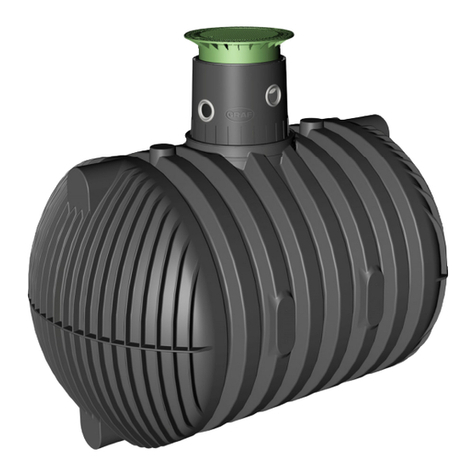
Graf
Graf CARAT XL Series Installation and maintenance instructions

ALDI
ALDI 46874 user guide
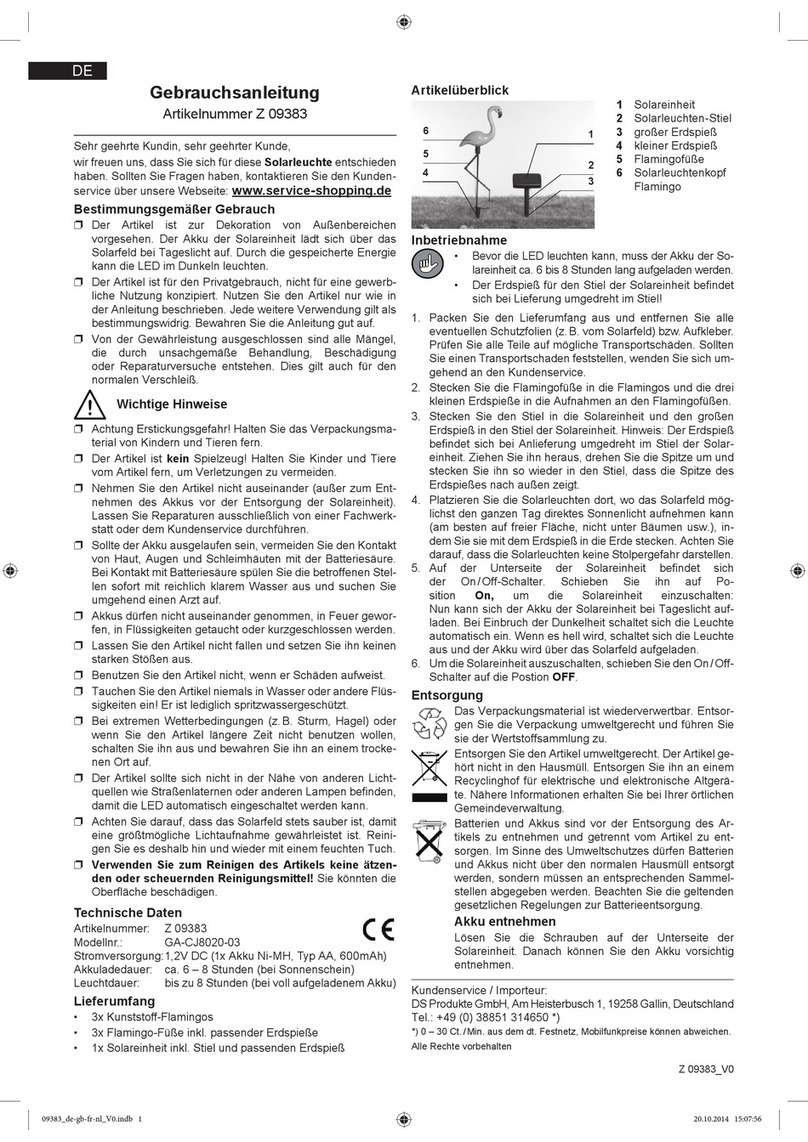
DS Produkte
DS Produkte Z 09383 operating instructions

PondXpert
PondXpert SolarAir 150 quick start guide
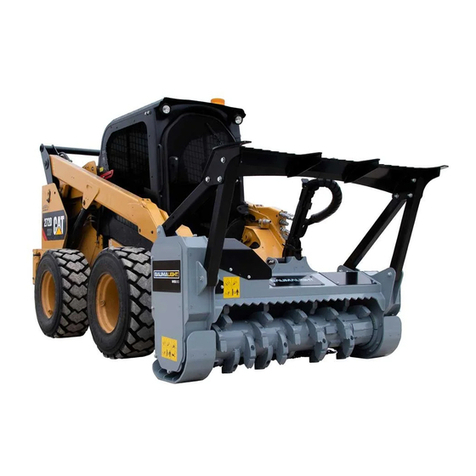
Baumalight
Baumalight iMS760 Operator's manual
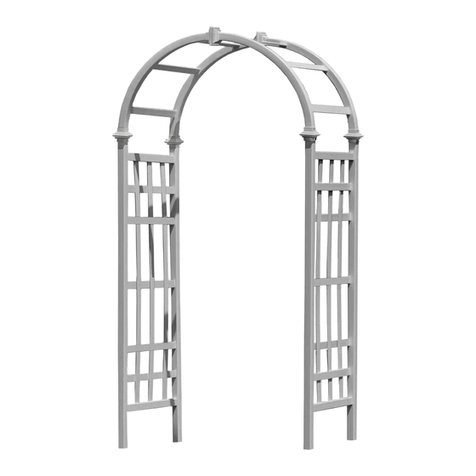
New England Arbors
New England Arbors Athens Assembly instructions

